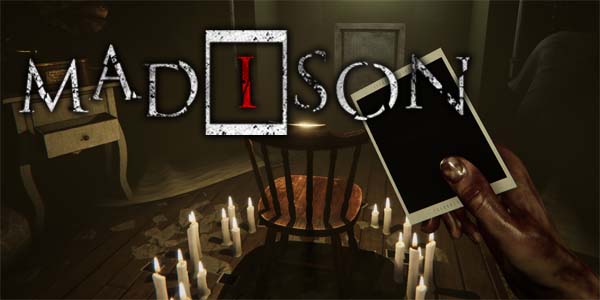
I feel like Halloween just wouldn't be Halloween anymore without playing some new P.T.-inspired indie horror game. This year's "hot" title seemed to be MADiSON by Bloodious Games, which I started playing with a group of 2 friends on Halloween night (after returning from taking the kids Trick or Treating), but we didn't get around to finishing until after the New Year. It wasn't that we didn't want to keep playing. Quite the opposite, in fact. The reason it took so long to finish is because all 3 of us really wanted to keep playing, so I had to wait till all 3 of us were available for a next session before continuing.
In addition to being another indie horror game in a long line of P.T. wannabes, MADiSON also follows in closely off the coattails of Visage. Both games heavily utilize a polaroid flash camera as a critical multi-tool, but MADiSON does one-up Visage by making the camera much more integral to core gameplay. While I only remember the camera in Visage being used as a source of temporary illumination, the camera of MADiSON is both integral to the story, and also absolutely necessary for solving multiple puzzles and for progressing the game's story.
Yet another indie horror game about wandering the halls of a haunted house -- this time with a camera!
Ocular Obscura
The core gimmick of MADiSON is that the player uses a polaroid camera to take pictures of the environment, and the resulting photograph will show things that aren't really there. These photographs will be used as clues to solve a puzzle or to progress the scenario, or taking the picture will just outright trigger the next objective. The house is littered with such puzzles. Unfortunately, the layout of the house, the pacing of the scenario, and the solutions to many puzzles can be a bit on the obtuse side. So much so, in fact, that Bloodious Games resorted to scattering blank polaroids near important objects, which act as obvious signposts that you should take a picture of the thing. This isn't exactly obvious at first, because many such marked objects will get no reaction from the camera until later parts of the scenario, when they become relevant to the current task at hand.
The dense nature of the game's map creates a lot of problems for pacing and signposting. Multiple puzzles, from different chapters of the game, might be present in the same space and could serve to interfere with one another or confuse the player.
This isn't to say that the puzzles are necessarily "bad". Once we realized that the house is littered with red herrings that don't become relevant until later, I actually started to like that these puzzles are a bit more complicated and multi-layered than the typical adventure game fare the we've been getting over the past decade or so. This was, in fact, a big reason why all 3 of us wanted to continue playing the game: we wanted to solve the next puzzle! So many adventure and horror puzzles these days don't get much more complicated than "open a drawer, find a key, and use said key on the one and only lock in that same room." They can feel so patronizing. MADiSON's puzzles definitely do not feel patronizing!
Many puzzles require careful observation and inferences from the environment.
Even if there is a simple clue like a color or a number that is given to the player, there is always some confounding additional factor. It's never just as simple as matching a number or a color or a shape. Most of these puzzles require some careful observation of the player's surroundings, some contextual inferences that won't be obvious to every player, and occasionally a lit bit of arithmetic, spatial, or logic skills. Playing this game in a group actually did help in this regard. Any one of us would have been stuck for a while on multiple puzzles, but there was always one of us who would pick up on a given clue and point it out to the others.
But some of the early puzzles, in particular, are a bit heavy on the red herrings and could definitely have used some better sign-posting and direction.
[More]
49704781-82c7-44a0-b8aa-67e4cff81352|1|5.0
Tags:Madison, Bloodious Games, indie gaming, horror, psychological horror, camera, demon, possession, occult, ritual, inventory, walking simulator, PS5
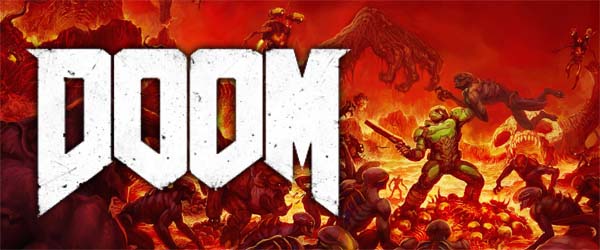
I never played the original Doom. I didn't get into PC gaming until the mid twenty-aughts, and even then didn't play much in the way of first person shooters that weren't the first two Call of Duty games. I was always more into SimCity and Civilization. So I was in no rush to play 2016's reboot of Doom, nor can I really look at it from the perspective of how it holds up against the original's legacy. I heard a lot of good things about it, and picked it up on this year's Steam summer sale.
Bethesda recently announced a sequel, so I thought I'd check this one out to find out if I should be excited.
I miss the good ol' days of game demos being available before a game releases.
I actually did play the free demo on the PSN months ago, which was an option for me because the game's been out for two years already (does this count as a retro review?). I miss the days when free demos were available before a game's release, so we could try it before we buy it. Sigh. Anyway, I had a lot of trouble with hitting enemies with a PS4 controller considering how fast and movement-oriented the combat is, but I definitely saw the potential enjoyment that I could have with the finer control of a mouse. So I went ahead with the Steam purchase.
Punch a demon in the face
Doom breaks from the cover-based mold set by most recent big budget first-person shooters by encouraging very fast, very frenetic, very aggressive, and very in-your-face action in a fashion similar to Bloodborne. Staggering an enemy allows you to perform a melee "Glory Kill" that provides you with a shower of health pick-ups and ammo. When your health is critical, the best course of action usually isn't to run away and take cover (like in so many modern cover-based shooters); rather, the ideal strategy is often to find the biggest, meanest demon, shotgun it in the face, and then rip its head off with your own bare hands. This keeps the player in the action, and mostly removes the need to backtrack through a level to find health kits and powerups. It's not quite as tactical or thoughtful as the dismemberment system from Dead Space, and some might argue that it's derivative of the chainsaw from Gears of War, but it does help to create a definite flow to the combat that helps it to stand out from other shooters of the era.
Charging an enemy is often the best way to restore your health.
The default move speed is faster than the sprint of most other modern shooter games. You can press 'Shift' to toggle a "walk" mode, but I honestly don't know why you would ever want to, and I never once used it after experimenting with the controls at the start of the game. Most enemies also charge at you with melee attacks or have actual projectile attacks (as opposed to hit-scan weapons). You don't avoid damage by ducking behind cover; instead, you can usually just side-step an incoming projectile or attack. Again, because of the fast speed of the character, the term "side-step" isn't really apt; it's more like a "side-sprint".
This all creates a very retro feel that [I assume] faithfully captures the spirit and fluidity of the original game's combat. It's an experience more akin to a first-person bullet hell game rather than the cover-based, whack-a-mole shooting galleries that define most modern shooters. [More]
2028a05f-7ac8-4aa6-83e8-785b11e76705|0|.0
Tags:Doom, Id Software, shooter, first person shooter, Hell, demons, occult, Mars, science fiction, horror, action
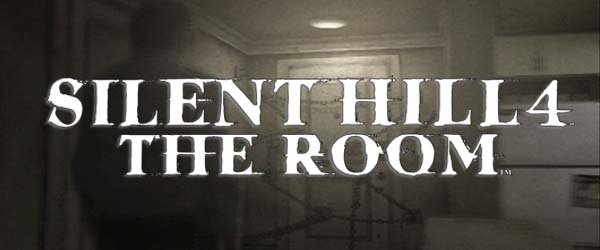
While I was playing through recent horror titles like The Evil Within, I noticed some interesting similarities with Silent Hill 4 that started to give me a new appreciation for some of this game's stronger aspects. In addition, while doing research for my Silent Hill timeline, I had to go back and play through Silent Hill 4: the Room again. I had only played through the game twice before, so I had to replay it in order to figure out how the timeline would work out. And while I was playing the game, I figured that I might as well go ahead and review it. At the time, it seemed like a novel idea to do a retro review of a Silent Hill game that wasn't Silent Hill 2, but lately, I've been seeing a lot of retro-reviews of The Room popping up other places. I haven't done any retro reviews yet; probably the closest thing has been my review of Demon's Souls. But in light of how unsuccessful the later Silent Hill games have been, the unfortunate cancellation of Silent Hills, and the uncertain future of the franchise (and of Konami as a studio), it's a good time to go back to look at what worked and what didn't about the previous games, and explore the question of whether we even want the franchise to continue.
The Room has the reputation of being the "bad" black sheep of the original Silent Hill tetralogy. I always thought that this reputation was unfortunate, and that the game wasn't quite as bad as people made it seem. I actually liked it better than Silent Hill 3 when I first played it, because I had never played the first Silent Hill. After I was able to track down a copy of the first game and play through it, Silent Hill 3 suddenly made a whole lot more sense, and I came to love it almost as much as I loved Silent Hill 2. So while I tend to agree that The Room is the "weakest" of the original Silent Hill games, I never really thought of it as being "bad"; just "less good". The release of future games by third party developers has only made The Room look better in retrospect.
An experimental formula
The game itself is a bit rough around the edges. It deviates significantly from the controls and mechanics established by the previous games in the franchise, and these changes are very hit-or-miss. This might be due, in part, to the possibility that The Room started out as an independent side project that was developed concurrently with Silent Hill 3, and that was eventually redesigned to work as a Silent Hill game in order to be more commercially viable. Whether or not that's true is still a hot issue of debate among the fanbase, but it's obvious to everybody that The Room plays a lot differently from previous titles.
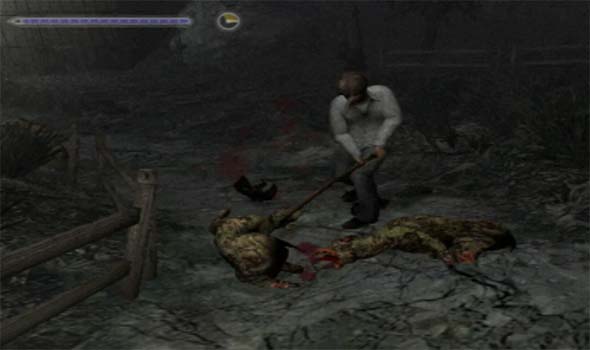
Movement and combat controls are radically changed from previous games in the series.
The most immediately obvious deviation is in movement and camera controls. The semi-first-person "tank" controls have been completely abandoned in favor of direct directional inputs, and the camera is significantly more limited than it has been in previous games. You can't snap the camera behind the character by holding the "look" button as you could do in previous games. Almost all camera angles are pre-set angles, and the player can usually only toggle between two possible camera angles in any given area.
This results in some very clumsy navigation of the environment, and it's very easy for the character to get turned around when camera angles flip. Most of the time, a camera change will go without a hitch, but there are a few frames in the game that consistently result in erratic and unpredictable movement. It happens most often when a camera change occurs concurrently with a change in direction of the character (to navigate around a corner or an obstacle). If the player's timing for changing the character's movement direction is not perfectly-timed, then the character ends up turning around, which can result in getting stuck in a loop between the two camera angles. This is the very reason that I prefer the tank controls. They may be a bit cumbersome, but at least they're consistent and always relative to a single frame of reference (the character's position in the world), rather than to an unpredictable camera.
The second major change is to combat. The game was designed to have a greater emphasis on melee combat, complete with new target-locking controls, a variety of breakable melee weapons, very limited ammunition for guns, and an on-screen meter for charging power attacks. The new movement controls do make it a bit easier to maneuver around enemies (especially multiple enemies), but only if you're in an open space and the camera angle doesn't go all wonky on you. The mechanics are serviceable, and I don't think they're as bad as some critics insist.
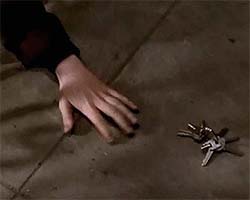
The designers were probably trying to mimic
the horror trope of fumbling for keys.
Inventory management is where things really start to get bad. Henry isn't a walking closet like the previous games' protagonists, and he has only a limited number of inventory slots. This is probably partly the result of the inventory being accessed in real-time by the directional buttons (which also might have played a role in the changes to the movement control scheme being entirely based up on the analog stick), in a desire to create a sense of frantically searching your pockets for a weapon or item while under pressure. It also adds more relevance to the Room 302 hub (another dramatic departure from previous games) by forcing you to go back to restock on supplies or swap out puzzle items.
But it's hindered by a lot of little mistakes... [More]
a5ccd49d-8af1-4839-8eb0-2796d3829980|6|4.5
Tags:Silent Hill, Silent Hill 4: the Room, Konami, Team Silent, KCET, Henry Townshend, Walter Sullivan, Eileen Galvin, room 302, horror, serial killer, murder, cult, occult, 21 Sacrements, sacrifice, ritual, ghost, escort quest, Alfred Hitchcock, retro review

In my previous blog entry about the history of Silent Hill's cult, I had originally intended to include a small section about the cult's name, as it is accepted by series fans: "The Order". However, it wasn't really relevant to the specific topic of the in-game cult history, since it is a more meta point about the games in general. So instead, I decided to make it a brief independent article:
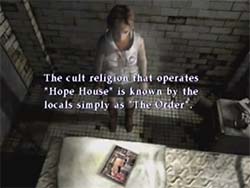
Joseph's article is the source of
the name "The Order".
I am one of a subset of Silent Hill fans who does not like using the term "The Order" to refer to the game's cult. For one thing, the name reminds me of the movie and Homecoming, which causes a resentful knee-jerk reaction. But there are also other in-game evidences to suggest that naming the cult might not have been intentional.
The primary source for the name "The Order" comes from an article written by the journalist Joseph Schreiber which details an orphanage that is run by a sect of Silent Hill's cult.
This article is present in Silent Hill 3 as well as Silent Hill 4: The Room, but there are slight differences in the text of the document in each game. Most noticeably, the name of the orphanage changes between the games. In Silent Hill 3 the article appears in a patient room in Brookhaven, and the orphanage name is given as "Hope House". In The Room, however, that same article gives the orphanage the name "Wish House". It was apparently changed sometime in the development of The Room, or it was mistranslated to begin with.
Silent Hill 4 also doesn't give us any indication as to whether the appearance of this article is intended to retcon the article in Silent Hill 3, or if it players are to assume that the actual text of the article changed at some point after the magazine's publication. Perhaps the article was reprinted in a different magazine and the editor or author changed the name. We don't know if it's the same magazine because in Silent Hill 3 the magazine is closed and we only see its cover and never the page of the article, but in Silent Hill 4 the magazine is sitting open on a desk and we see only the page of the article and not the cover.
"The Order" comes from an article that appears in both Silent Hill 3 (LEFT) and Silent Hill 4 (RIGHT).
But if the name of the orphanage changes between versions, can we trust the name of the cult to be correct?
As far as I can remember, "The Order" is never referred to anywhere else in The Room... [More]
9fac77d9-95be-4c33-a431-c4ba4970c07d|6|4.3
Tags:The Order, Silent Hill, Silent Hill 3, Silent Hill 4: the Room, Silent Hill Homecoming, movie, cult, occult, religion, church, Joseph Schreiber

In one of my earlier posts titled "'Silent Hill' is NOT about 'repressed guilt'; it's about occultism!", there seemed to be some misunderstandings about the interpretations that I offered. For one thing, reader Malik commented:
"I have to disagree. The series has never established the cult as the basis for the goings-on in Silent Hill. It is never explicitly stated that the cult or Alessa are the true source of the supernatural power ..."
The commentor is correct on that point. Though, I don't think I ever said that Alessa and the cult were the ultimate source. If you got that impression, then there might have been a misunderstanding or miscommunication, and I apologize for not being clear. To be clear: I was arguing that the plots of the game were focused on the cult and Alessa, and how they affected this supernatural power -- not that the cult is the cause of the power. I thought about responding with my own comment on that original post, but I felt that it would be more appropriate to just write a new blog article about it, so that I could spend more time exploring the town's history, as it was established by the original creators. So, Malik, I hope you read this. and I hope it makes more sense. I'd love to hear your feedback.
Please note that much of this post is speculation. The games themselves provide very little concrete information about the extended history of the cult and region -- especially prior to the Civil War. The following is all retroactive explanation and may not represent the original intentions of the creators. This will be my own, personal opinion and interpretation regarding the nature of Silent Hill's otherworldly power.
The Place of the Silent Spirits
I never intended to imply that the cult and Alessa created the supernatural phenomena, nor that they are the power's ultimate source. I agree that the power likely existed (in some form) far prior to the events of the first game.
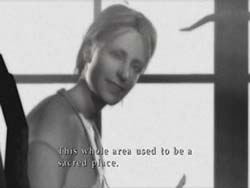
Mary refers to Silent Hill as a "sacred place".
Mary's comments regarding the place being "sacred" in the past implies that early inhabitants (probably the Native Americans) were aware of the supernatural effects of the region going back hundreds - maybe thousands - of years. Since the Natives saw the place as being "sacred" and beautiful, I tend to believe that the power did not originally manifest demons or project people's nightmares onto reality during these periods of history. Instead, I would imagine that the force (whether conscious or not) would have been more benign - maybe even benevolent.
We don't know much about the natives' beliefs prior to the arrival of European colonists, and what little we do know is possibly clouded by the lens of the European colonists and cultists.
Based on what is known about real-world Native American beliefs, it is probably safe to assume that the natives of the Toluca Lake region would likely have worshipped any regional supernatural power as "ancestral spirits" or as "spirits of nature". The Book of Lost Memories can be found in Silent Hill 2 after beating the game, and it supports this idea and tells us about the nature spirits:

"They called this place 'The Place
of the Silent Spirits'. By 'spirits',
they meant not only their dead
relatives, but also the spirits that
they believed inhabited the trees,
rocks and water around them."
- Lost Memories book (Silent Hill 2)
The name "Place of the Silent Spirits" may simply be an innocent callback to the game's title, or it could be a significant clue. The fact that the spirits were "silent" implies that the natives were not able to talk to it; or at least, the spirits did not talk back. This implies that the "spirits" are probably not a conscious entity. Even though it can apparently react to the thoughts - and even desires - of the people it comes in contact with, it may not have an intelligence or will of its own (which I explained in my earlier post about repressed guilt)... [More]
643444f5-4ba4-4d6c-818b-921ecc1c7154|8|5.0
Tags:Silent Hill, Silent Hill 2, Silent Hill 3, Silent Hill 4: the Room, history, cult, occult, black magic, religion, spirituality, Christianity, Satan, god, Native Americans, Glooscap, Otherworld, paradise, Maine, colony, Civil War, colonial America, Toluca Lake, tourism, drugs
|

| 12 | | | | | | | 60 | | 11 | | | | | | | 55 | | 10 | | | | | | | 50 | | 09 | | | | | | | 45 | | 08 | | | | | | | 40 | | 07 | | | | | | | 35 | | 06 | | | | | | | 30 | | 05 | | | | | | | 25 | | 04 | | | | | | | 20 | | 03 | | | | | | | 15 | | 02 | | | | | | | 10 | | 01 | | | | | | | 05 |
|